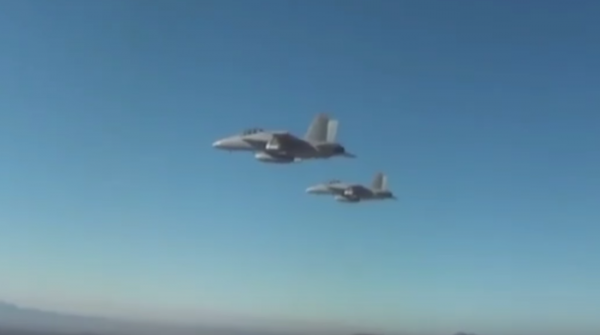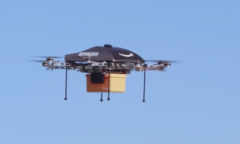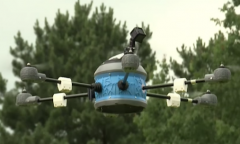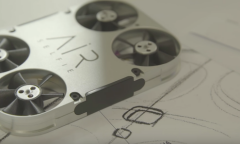By Vishal Goel, | January 13, 2017

The drones were launched from three F/A-18 Super Hornet fighter jets. (YouTube)
The Pentagon successfully tested a swarm of 103 Perdix micro-drones at China Lake, California, in October last year, according to the US Department of Defense.
The swarm including micro-drones measuring around six inches was one of the largest micro-drone swarms ever tested at a single instance. The drones were launched from a total of three F/A-18 Super Hornet fighter jets.
Like Us on Facebook
The tests were carried out by the Strategic Capabilities Office (SCO) in partnership with the Naval Air Systems Command. The tests were documented and aired on Sunday's CBS News program "60 Minutes." During the tests, the micro-drones demonstrated advanced swarm behaviors such as collective adaptive formation flying, decision-making, and self-healing.
US Secretary of Defense Ash Carter congratulated the Strategic Capabilities Office for the successful demonstration. He said that this kind of cutting-edge innovation will keep the US a step ahead of its adversaries and will advance its development of autonomous systems.
How do Perdix drones function?
According to SCO Director William Roper, Perdix drones are not pre-programmed and synchronized individually. They are a collective organism which share one distributed brain for decision-making and adapting to each other like swarms in nature.
Since every Perdix communicates and collaborates with every other Perdix, the swarm has no leader and can adapt to drones entering or exiting the team, William added.
The Perdix drone was designed originally by MIT engineering students and was later modified for military use by the scientists and engineers at MIT Lincoln Laboratory since 2013. Its software and hardware have been continually updated in successive design generations.
The technology is currently in its sixth generation. Its reliability was confirmed in tests under potential deployment conditions-temperatures of minus 10 degrees Celsius, speeds of Mach 0.6, and large shocks-conditions encountered during ejection from fighter flare dispensers.
-
Use of Coronavirus Pandemic Drones Raises Privacy Concerns: Drones Spread Fear, Local Officials Say

-
Coronavirus Hampers The Delivery Of Lockheed Martin F-35 Stealth Fighters For 2020

-
Instagram Speeds Up Plans to Add Account Memorialization Feature Due to COVID-19 Deaths

-
NASA: Perseverance Plans to Bring 'Mars Rock' to Earth in 2031

-
600 Dead And 3,000 In The Hospital as Iranians Believed Drinking High-Concentrations of Alcohol Can Cure The Coronavirus

-
600 Dead And 3,000 In The Hospital as Iranians Believed Drinking High-Concentrations of Alcohol Can Cure The Coronavirus

-
COVID-19: Doctors, Nurses Use Virtual Reality to Learn New Skills in Treating Coronavirus Patients











